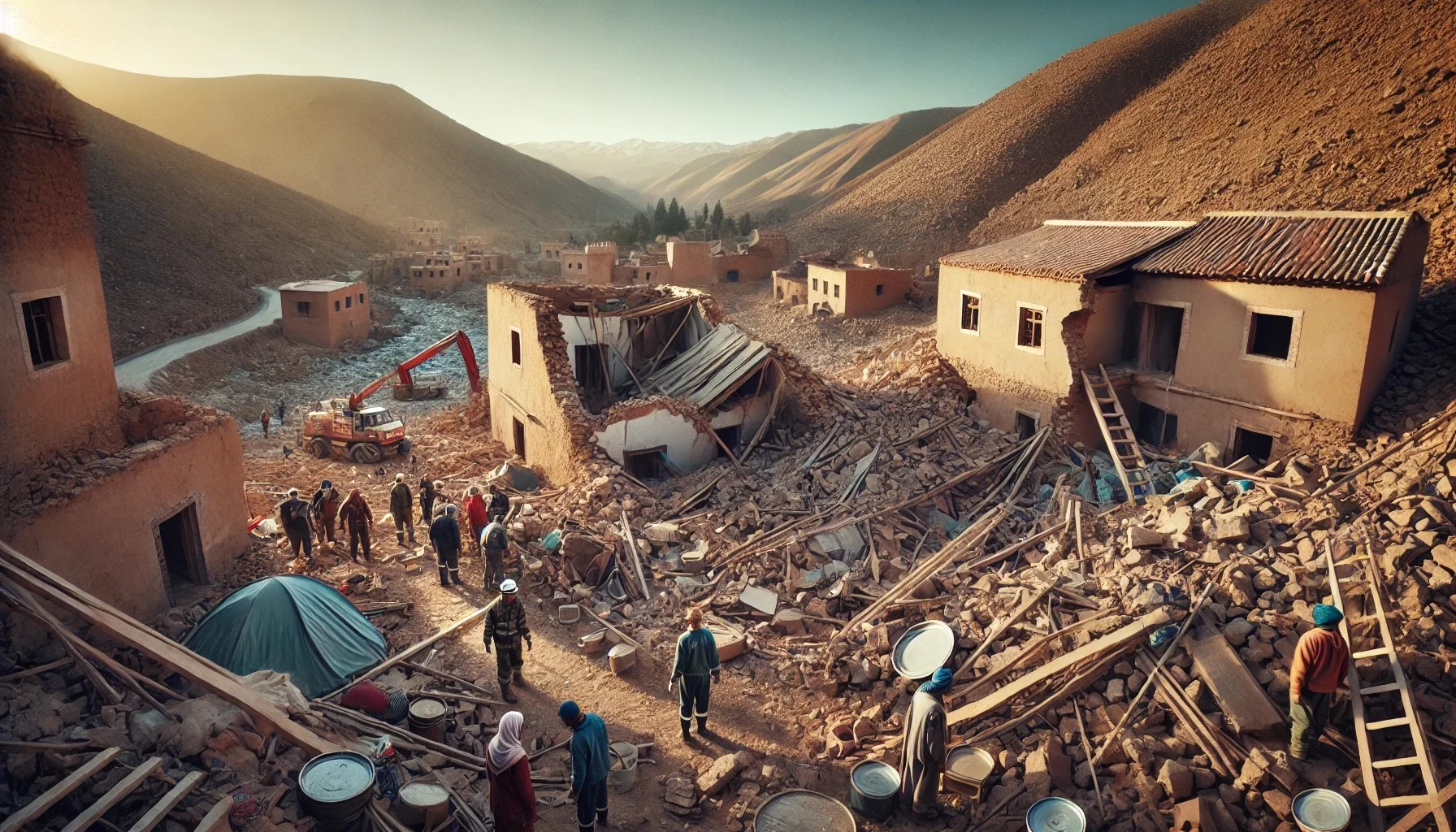
The 2023 Morocco Earthquake
by: The Calamity Calendar Team
September 8, 2023
A Night That Shook Morocco
Late on the night of September 8, 2023, the people of Morocco were jolted from their sleep by an earthquake that would forever alter their lives. At 11:11 PM, a 6.8-magnitude earthquake shook the ground beneath the High Atlas Mountains, with its epicenter near the rural town of Ighil, approximately 73 kilometers southwest of Marrakesh. This tremor, the largest in the region in over a century, was strong enough to be felt across cities hundreds of kilometers away, including Rabat, Casablanca, and Agadir.
The Immediate Aftermath
The seismic shock caused immediate devastation. In Marrakesh, a city renowned for its ancient architecture and UNESCO-listed medina, parts of the Koutoubia Mosque and the famous red walls that encircle the city crumbled. While Marrakesh endured significant damage, the earthquake’s most profound impact was on rural communities in the mountains.
Entire villages in the Al Haouz Province were reduced to rubble. Traditional homes made from mud bricks and stone, common in these regions, stood no chance against the force of the quake. Families were trapped beneath the debris, and the destruction of narrow, winding mountain roads made rescue operations difficult.
A Race Against Time
As the dust settled, the full extent of the disaster became clearer. By mid-September, the confirmed death toll exceeded 2,900, with over 5,500 people injured. Many villages remained unreachable due to landslides and damaged infrastructure. In some of the hardest-hit areas, such as Asni and Ouirgane, rescue workers raced to find survivors, often using their hands to dig through the rubble.
The earthquake’s shallow depth of 19 km made it particularly destructive, and aftershocks—one as large as 4.9 magnitude—added to the peril. Residents, fearful of further collapses, slept in the streets and open spaces, unable to return to their homes.
Marrakesh: A City Wounded but Standing Strong
While rural areas bore the brunt of the destruction, the historic city of Marrakesh also suffered heavily. Tourists and locals alike were caught in the chaos as buildings swayed and centuries-old structures cracked under the pressure. The medina, a labyrinth of narrow streets, saw homes collapse, and the city's iconic red sandstone walls were left scarred. The Koutoubia Mosque, often referred to as the "roof of Marrakesh," sustained cracks in its minaret.
Thanks for subscribing!
Tourism, a lifeline for Marrakesh, was immediately impacted as travelers fled the city. Yet, amid the destruction, the resilience of the people of Marrakesh became evident. Volunteers and local organizations mobilized to provide food, water, and shelter to those displaced by the disaster.
International Response and Aid
The Moroccan government quickly declared a three-day national mourning period, and rescue teams were dispatched across the country. However, getting help to the most remote villages in the High Atlas region posed significant challenges. Landslides blocked key access routes, and the scale of destruction left many communities isolated.
Despite initial hesitation, Morocco accepted international aid from several nations. Countries like Spain, France, and Qatar sent specialized rescue teams, and the United Nations and non-governmental organizations provided critical supplies such as tents, blankets, and medical kits. Search and rescue dogs were deployed to find survivors trapped under collapsed buildings.
The Human and Economic Toll
Beyond the immediate loss of life, the earthquake’s destruction will have long-lasting effects on Morocco. Early estimates of the financial cost of the earthquake suggest that the damage could reach over $10 billion USD, though this figure may rise as assessments continue. For a country that relies heavily on tourism, particularly in Marrakesh, the economic consequences are severe.
Entire villages in the Al Haouz region have been rendered uninhabitable, leaving thousands homeless. Temporary shelters were established, but long-term reconstruction will require significant resources and time. In many cases, the traditional building methods used in rural areas were not designed to withstand such powerful seismic activity, prompting discussions about the need for stricter building codes
Looking Forward: Rebuilding and Reflection
In the weeks following the earthquake, attention has shifted to recovery efforts. International experts have begun helping with structural assessments, and engineers are advising on how to rebuild more resilient homes and infrastructure.
Morocco now faces the monumental task of rebuilding its cultural heritage. Sites in Marrakesh and nearby areas will need careful restoration, but the process will be slow and costly. For the villages in the High Atlas, rebuilding efforts must strike a balance between preserving traditional ways of life and ensuring safety from future quakes.
Conclusion: Strength in Adversity
The 2023 Morocco Earthquake has left a lasting scar on the country, both physically and emotionally. Yet, amid the tragedy, stories of resilience and solidarity continue to emerge. Communities have come together to support one another, and international aid has played a crucial role in the early recovery efforts. While the road to recovery will be long, Morocco’s strength and unity in the face of this disaster offer hope for the future.
Stay in the Loop!
Become a Calamity Insider and get exclusive Calamity Calendar updates delivered straight to your inbox.
Thanks! You're now subscribed.